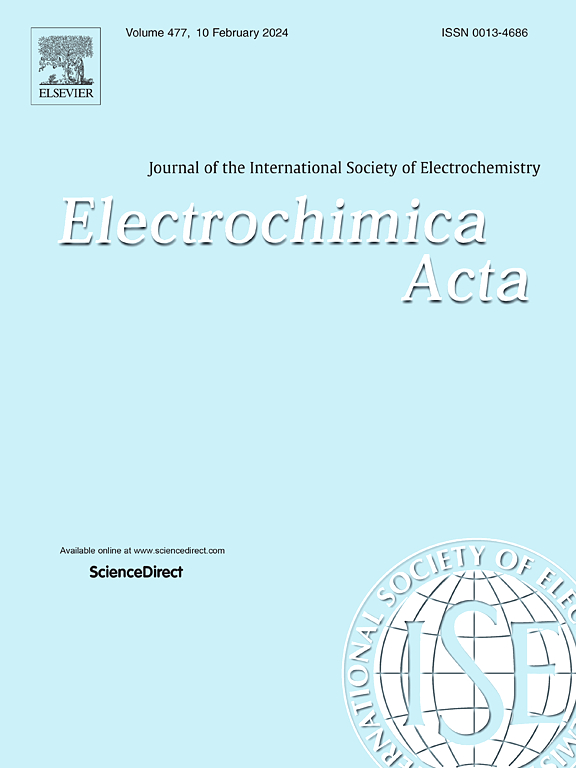用超磷和空心碳纳米球二元导电剂增强LiMn0.6Fe0.4PO4的电化学性能
IF 5.6
3区 材料科学
Q1 ELECTROCHEMISTRY
引用次数: 0
摘要
LiMnxFe1-xPO4 (LMFP)因其优异的能量密度、高安全性和低成本被认为是理想的下一代锂离子电池正极材料。然而,低分子荧光蛋白的导电性差已成为成为lib电极材料的迫切问题。本文将空心碳纳米球(HCN)分别与超级P(SP)、乙炔黑(AB)和Ketjen Black(KB)复配,构建二元导电剂。SP和HCN作为二元导电剂的颗粒级配填充了HCN、LMFP和集电极之间的空隙,提高了活性物质之间的电子转移,进一步降低了电荷转移阻抗。其中,添加SP-HCN双导电剂的LMFP电极表现出优异的电化学性能,在0.1℃时比容量为150.9 mAh·g−1,在1℃下循环200次后容量保持率为130.8 mAh·g−1,与未添加HCN的样品相比,容量提高了10 ~ 20 mAh·g−1,Li+扩散系数提高了一个数量级至1.03×10−12,电化学传递阻抗从269.91降低到90.92。结果表明,SP-HCN二元导电剂显著提高了LMFP电池的性能。本文章由计算机程序翻译,如有差异,请以英文原文为准。


Enhancing the electrochemical performance of LiMn0.6Fe0.4PO4 with binary conductive agent of super P and hollow carbon nanosphere
LiMnxFe1-xPO4 (LMFP) is regarded as an ideal next-generation cathode material for lithium-ion batteries (LIBs) due to the excellent energy density, high safety and low cost. However, the poor electrical conductivity of LMFP has become an urgent problem in the way to be the electrode materials of LIBs. In this paper, the hollow carbon nanospheres (HCN) is compounded with Super P(SP), Acetylene Black(AB) and Ketjen Black(KB) to construct the binary conductive agent, respectively. Particle gradation of SP and HCN as binary conductive agent fills the empty space between HCN, LMFP, and the collector, which improves electron transfer between active substance, and further reduces the charge transfer impedance. Specifically, the LMFP electrode with SP-HCN binary conductive agent exhibits excellent electrochemical performance with the high specific capacity of 150.9 mAh·g−1 at 0.1 C and 130.8 mAh·g−1 with a capacity retention of 93.67% after 200 cycles at 1 C. Compared to the sample without HCN, the capacity is improved by 10–20 mAh·g−1, the Li+ diffusion coefficient is improved by one order of magnitude to 1.0310−12, and the electrochemical transfer impedance is reduced from 269.91 to 90.92. The finding shows that the SP-HCN binary conductive agent significantly enhances LMFP battery performance.
求助全文
通过发布文献求助,成功后即可免费获取论文全文。
去求助
来源期刊

Electrochimica Acta
工程技术-电化学
CiteScore
11.30
自引率
6.10%
发文量
1634
审稿时长
41 days
期刊介绍:
Electrochimica Acta is an international journal. It is intended for the publication of both original work and reviews in the field of electrochemistry. Electrochemistry should be interpreted to mean any of the research fields covered by the Divisions of the International Society of Electrochemistry listed below, as well as emerging scientific domains covered by ISE New Topics Committee.
 求助内容:
求助内容: 应助结果提醒方式:
应助结果提醒方式:


